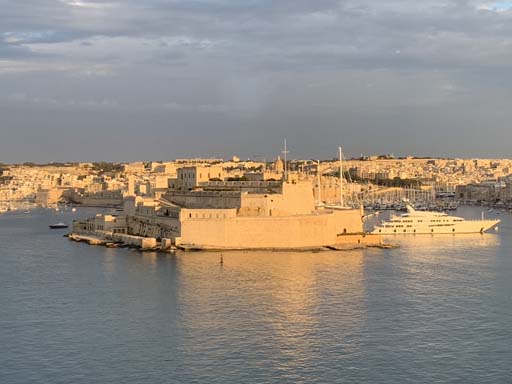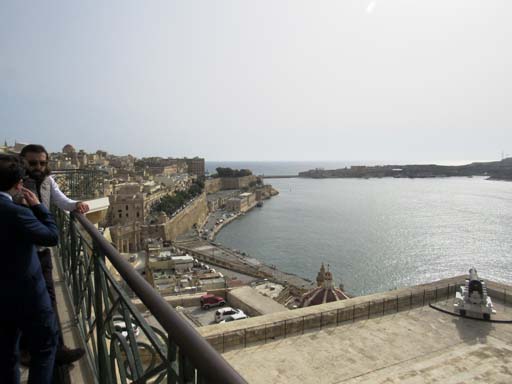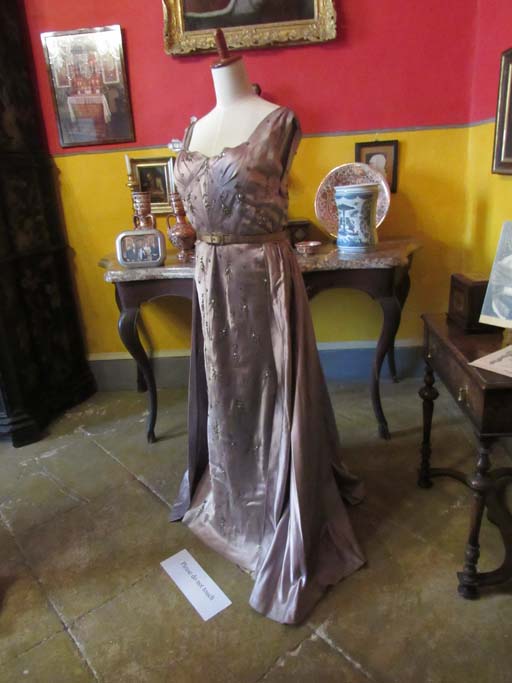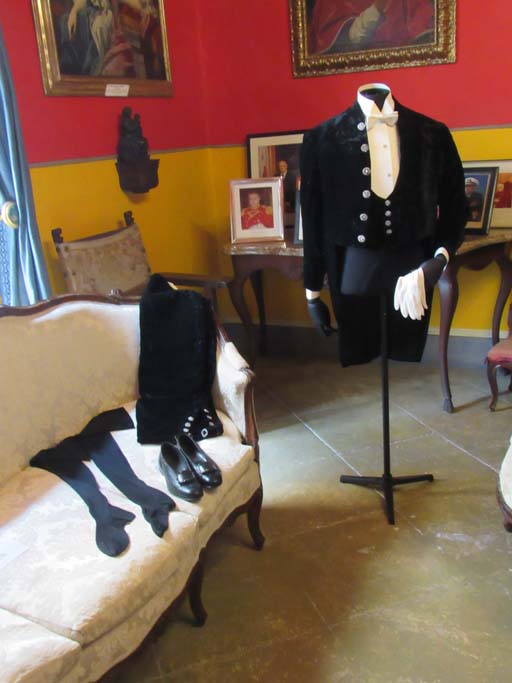First, an update. Kathy’s finally come home after 13 days in COVID jail in a hotel room in Malta. And I’ve got a cold, which tests insist isn’t COVID, so two cheers for me.
But enough of the depressing stuff. Let’s talk about the good things.
We spent a few days on Malta before Kathy fell ill, and we had a chance to scout around. Valetta is a walled city, with a profusion of gates, bastions, and forts made of pale limestone that turns gold in the setting sun. The place looks like nowhere else. You can walk along the walls and enjoy one striking vista after another.
The walls are so massive, thick, and deep that during World War II the British bored large tunnels into the walls to serve as bomb shelters.
The city rises from the water to the central square, sometimes via fine streets, sometimes via steep alleys or stairs. Climbing a succession of stairs and alleys sufficiently tired me that I located a cafe and required a couple Aperol spritzes before I could continue my tour.
The walls of course were built by the Knights of St. John of the Hospital of Jerusalem (or probably their slaves). The Knights were a military order that had been chased out of Acre and then Cyprus and Rhodes, but they managed to hold Malta against the Ottomans, especially during a long and vicious siege in the 16th Century. The victory over the Turks brought the Knights a lot of attention and donations from the European powers, and the Knights were therefore able to go on a building spree that included the entire city of Valetta.
The Knights were all from noble families and many were rich and could afford to live in palazzos rather than the dormitories (“auberges’) occupied by knights of a particular nationality (“langue”). The highest ranks of the Knights were reserved for members of the nobility until the 1990s! The Knights tended to view the native Maltese pretty much as the medieval nobility always viewed their inferiors, until the siege by the Ottomans. The bravery and ferocity of the Maltese so impressed the Knights that they pronounced a policy of “gentlemen and gentlemen,” in which the Maltese were all considered of gentle birth.
The Knights had their very own archipelago, and also their very own Inquisition. (I viewed the inquisitor’s house, which was very large and included a large number of cells for prisoners.) Originally the Inquisitor was sent by the Pope to help settle quarrels between the greedy, power-hungry Knights and the greedy, power-hungry Church, but soon the Inquisitors started looking around for witchcraft and heresy, and amazingly enough found exactly what they were looking for! So they tortured and imprisoned and executed, and did it so well that a number of them got to be Pope!
The torturing and imprisoning went on until 1798, when the last Inquisitor skedaddled shortly before Napoleon invaded and booted the Knights off the island. (That last one probably didn’t get to be Pope.)
Apropos the nobility, we visited the Casa Rocca Piccola, a 16th Century palazzo currently in the possession of the Ninth Marquis of Piro, who is also the Ninth Baron of Budach. This isn’t a museum, it’s a private home, and it has a kind of congenial atmosphere that you don’t get in an institutional setting. (It’s also a B&B and a restaurant, in case you want to settle in for a while.)
There are displays of silver and crystal, furniture, family portraits, and a lovely garden complete with a seminude statue and a large, rather chatty blue parrot. Also a private bomb shelter installed just before the Second World War.
I was a bit surprised when the Marquis and his Marquesa turned up to welcome us in person. They told us that, in light of the recent coronation in Westminster, they had looked through some old trunks and found the costumes worn by the Marquis’ father and mother at the coronation of Elizabeth II. The Eighth Marquis had got to know Elizabeth and Philip when they were just plain old Mr. and Mrs. Mountbatten, and living like ordinary people in Malta (albeit ordinary people who spent their time with the local nobility).
Apparently knee breeches and silk stockings were still the thing back in 1953. The outfits look pretty good for clothes that have been in a trunk for seventy years.
Note that the invitation is signed simply “Norfolk,” presumably because we’re supposed to know that he’s a duke and the hereditary earl marshal and the head of the College of Arms and all the rest of it. (And so Sula signs herself simply as “Sula” in the Praxis books.)
The Marquis and Marquesa were very good to welcome us into their home, and if they ever turn up on my doorstep, I’ll give them a tour.





Yay!
And, mmmm, that’s good pope-talk!
Comments on this entry are closed.